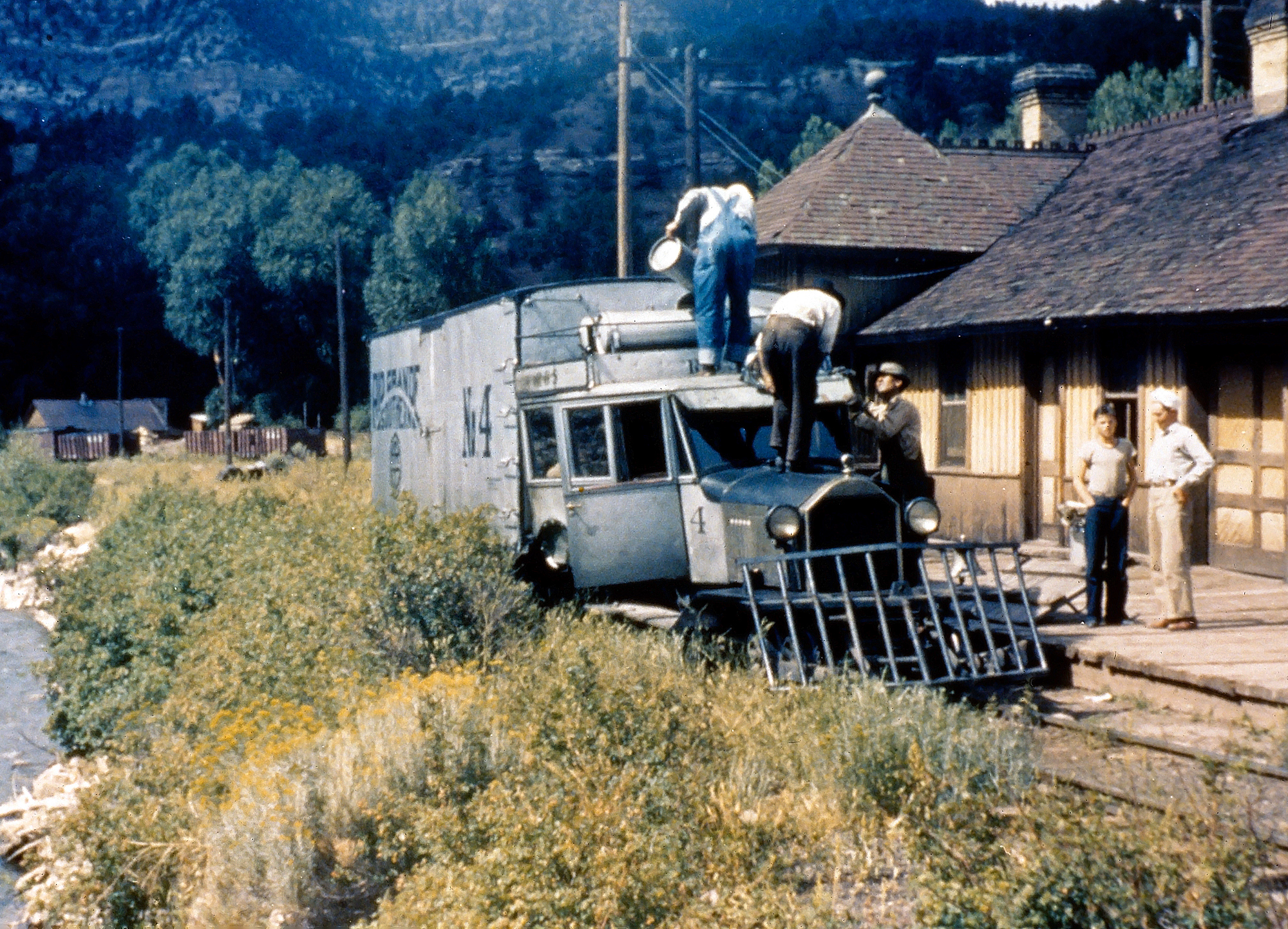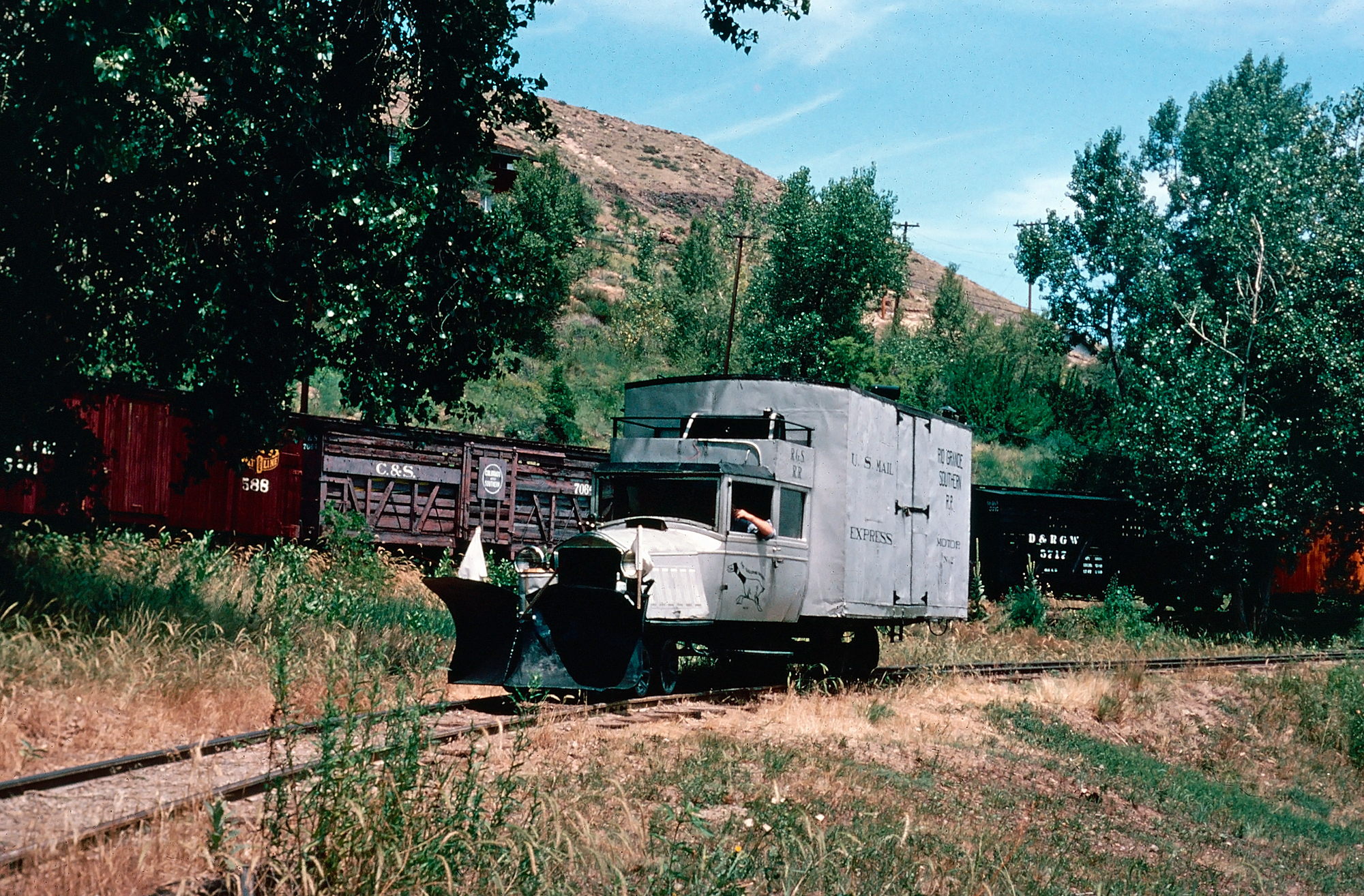"Galloping Geese" (Railcars): History, Specs, Survivors
Last revised: October 28, 2024
By: Adam Burns
The Rio Grande Southern Railroad (RGS) holds a storied place in American railroad history, with one of its most fascinating contributions being the creation and operation of the "Galloping Geese" rail cars.
These unique, hybrid rail vehicles were a remarkable example of ingenuity, born out of necessity, and became iconic symbols of Colorado's narrow-gauge railroading legacy.
The Galloping Geese were developed during the Great Depression, a period marked by economic hardship and declining profitability for many railroads.
The RGS, which served the rugged and sparsely populated regions of southwestern Colorado, was particularly hard hit. Traditional steam locomotives and passenger trains had become too costly to operate due to plummeting freight volumes and passenger revenues.
Faced with potential bankruptcy, RGS General Manager Victor A. Miller and his team conceptualized a more economical solution by repurposing automotive technology.
They sought to create a hybrid vehicle that combined the efficiency and lower operating costs of automobiles with the rail-based transport capabilities of a traditional train. Thus, the Galloping Goose were born.
 Rio Grande Southern "Galloping Goose" #4 is stopped at Placerville, Colorado, circa 1949. American-Rails.com collection.
Rio Grande Southern "Galloping Goose" #4 is stopped at Placerville, Colorado, circa 1949. American-Rails.com collection.Origins and Purpose
By the 1920s, automobiles and encroaching highways ended the railroad's tourist business along with much of its remaining passenger business. This was further compounded by the Great Depression which hit the nation following the stock market crash of October 29, 1929.
The RGS entered bankruptcy on December 11, 1929 and then-parent Denver & Rio Grande Western had little interest in saving the road from its misery. Alas, the railroad would never escape receivership.
The company appointed Victor A. Miller as receiver who quickly went to work solving the company's growing debt and lack of online business.
One of his first moves was to abolish remaining steam powered passenger trains and scrapping old, worn out wooden coaches and baggage cars. In their place he had the shop crews build self-propelled railcars (usually from Pierce-Arrow sedans), featuring the cab on the head-end and a freight carbody trailing.
- They were able to build such cars thanks to Miller's move to overhaul the Ridgway Shops so the railroad could handle its own major repairs. -
The railcar retained its engine and rode on either two or three, two-axle bogies. The cars were painted silver and dubbed "Galloping Geese" due to the sound of their horns and rocking quality over the poor track.
Design and Construction
Despite their appearance the cars were a success, capable of handling the remaining passenger business, mail/express, and any less-than-carload (LCL) traffic that could be drummed up.
The fleet consisted of units #2-7; #2 and #6 sported a pair of two-axle bogies (#2 had an enclosed freight compartment while #6 featured an open bed) while #3-5 and #7 featured a trio of dual axles.
Interestingly, the idea had been implemented years earlier in 1931 when the railroad built a railcar, #1, from a Buick "Master Six" four-door sedan to haul passengers, mail/express, and LCL freight.
Modifications included converting the automobile to run on narrow-gauge track wheels and adding a cargo box for mail and small freight. This initial example was scrapped in 1933.
While Goose No. 1 met initial operational needs, it underwent significant redesigns along with the subsequent models. The most notable changes involved replacing the original automotive bodies with larger, more robust units that could accommodate passengers, mail, and freight more effectively.
Ultimately, seven Galloping Geese were constructed between 1931 and 1936. These vehicles predominantly used parts from Pierce-Arrow and Buick automobiles and featured a variety of body styles:
- Galloping Goose No. 2 - (1931) modified Buick automobile.
- Galloping Goose No. 3 - (1932) Pierce-Arrow body with freight compartment.
- Galloping Goose No. 4 - (1932) similar to No. 3.
- Galloping Goose No. 5 - (1933) larger body, expanded cargo space.
- Galloping Goose No. 6 - (1934) Pierce-Arrow chassis with significant passenger accommodation.
- Galloping Goose No. 7 - (1936) the largest, similar to No. 6 but with a complete reconfiguration for enhanced passenger and freight service.
In 1945 the RGS rebuilt #3, #4, and #5 with Wayne bus bodies allowing them to handle more business.
Operations and Impact
The Galloping Geese provided a lifeline for the isolated communities along the RGS route, running from Ridgway to Durango, navigating the precipitous canyons and high-altitude passes of the San Juan Mountains.
They maintained essential services by delivering mail, express freight, and providing passenger transport at a fraction of the cost of running full-sized steam trains. Despite their unconventional appearance and the occasional breakdowns, the Galloping Geese were remarkably reliable.
The Galloping Geese were particularly famous for maintaining service during difficult weather conditions, often being the only source of reliable transport in winter when other means were impassable.
Legacy and Preservation
The success of the Galloping Geese extended the operational life of the RGS, allowing it to continue until 1951 despite ever-growing financial challenges. The Geese became beloved by rail fans and local residents alike, symbolizing an era of innovative adaptation.
After the demise of the RGS in 1951, all of the cars (#2-7) were eventually preserved and have been lovingly restored; even a replica of #1 was rebuilt in 2000 by the Ridgway Railroad Museum and is operational in Ridgway. The units dispositions are as follows:
- #2, #6, and #7 are operational at the Colorado Railroad Museum
- #3 can be found at Knott's Berry Farm in California and occasionally operates on the Ghost Town & Calico Railroad during off-season periods
- #4 is also operational at Telluride, Colorado, restored in 2012.
- #5 is owned by the city of Dolores, Colorado. It occasionally operates on the Cumbres & Toltec Scenic, Durango & Silverton Narrow-Gauge, and at the Colorado Railroad Museum
 Rio Grande Southern "Galloping Goose" #2, preserved and operational at the Colorado Railroad Museum in Golden, Colorado. American-Rails.com collection.
Rio Grande Southern "Galloping Goose" #2, preserved and operational at the Colorado Railroad Museum in Golden, Colorado. American-Rails.com collection.Conclusion
The Galloping Geese stand as a testament to the resourcefulness and creativity born out of economic adversity.
These rail cars not only provided a critical service during challenging times but also left an indelible mark on railroad history. Today, they offer a tangible link to the past, inviting new generations to marvel at a uniquely American chapter of transportation innovation.
Their legacy endures, chugging and waddling down the rails of memory, reminding us of a time when the spirit of ingenuity took flight on narrow-gauge tracks.
Recent Articles
-
Indiana - Whiskey - Train Rides
Dec 23, 25 06:40 PM
Whether you're a local resident or a traveler looking to explore Indiana from a unique perspective, hopping on a whiskey train ride is a journey worth considering. -
California - Wine Tasting - Train Rides
Dec 23, 25 06:33 PM
This article explores the charm, routes, and offerings of these unique wine tasting trains that traverse California’s picturesque landscapes. -
Alabama - Wine Tasting - Train Rides
Dec 23, 25 06:26 PM
While the state might not be the first to come to mind when one thinks of wine or train travel, the unique concept of wine tasting trains adds a refreshing twist to the Alabama tourism scene.



